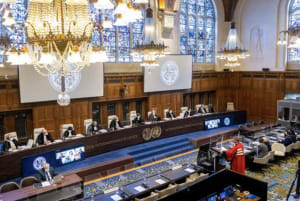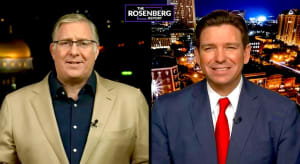Forgiveness - Yom Kippur and the Messiah's atoning sacrifice

Irrespective of one's beliefs, the human spirit yearns to leave behind past errors and grievances, striving for a healthier future. This desire for renewal is at the heart of Yom Kippur, or the 'Day of Atonement,' one of the most significant holidays in the Jewish faith, which begins on Sunday evening.
During this observance, adherents fast for 25 hours and seek forgiveness from God and each other for their transgressions. Yom Kippur is a time of deep reflection, prayer, and spiritual cleansing, observed by over half of Israeli Jews, including many who are not traditionally religious.
Community purification rituals played a significant role in early societies, with each religious culture having its characteristic ceremonial system and customs. However, the sacrificial cult, which had a history of several thousand years, eventually gave way to prayer-centered worship. This transformative shift began in Jerusalem some 2,000 years ago and was marked by the destruction of the Second Temple in 70 A.D.
With the Temple's destruction, the daily sacrifices prescribed in the Mosaic Law ceased, including the annual Day of Atonement sacrifice on Yom Kippur. Faced with this challenge, the Jewish leaders of the time made a revolutionary decision to replace the divinely mandated sacrifices with prayers, considering it to be a temporary solution to address the existing impossible situation.
However, according to the Talmud, one of the most important texts of Jewish tradition, the real issue had already begun decades before the Temple's destruction. Jewish leaders who survived the Roman legion's destruction believed it was crucial to record for posterity that in the forty years preceding the Temple's destruction, God never accepted the Yom Kippur sacrifice. This assertion raises numerous questions, such as how they could be certain whether God accepted the sacrifice or not and what led them to believe this during the Temple's final 40 years of existence.
According to the Babylonian Talmud: "Our Rabbis taught: During the last forty years before the destruction of the Temple, the lot ['for the Lord'] did not come up in the right hand; nor did the crimson-colored strap become white; nor did the westernmost light shine; and the doors of the Hekal (Temple) would open by themselves" (The Soncino Talmud, tractate 'Yoma,' 39b).
According to the Jerusalem Talmud: "Forty years before the destruction of the Temple, the western light went out, the crimson thread remained crimson, and the lot for the Lord always came up in the left hand. They would close the gates of the Temple by night and get up in the morning and find them wide open" (The Yerushalmi, translated by Jacob Neusner, p. 156f).
Both citations describe four extraordinary signs that clergy and the general population interpreted as divine indicators that God was no longer accepting the High Priest’s atonement sacrifice.
The first sign was related to the casting of lots by the High Priest to determine which of two goats would be sacrificed to God on Yom Kippur, a practice described in the Bible in Leviticus 16:7-10. In this ritual, the lot sometimes fell into the right hand of the High Priest and sometimes into the left. Over the centuries, when it landed in the right hand, it was considered a favorable sign by the Israelites. However, in the 40 years leading up to the Temple's destruction, the lot consistently ended up in the left hand, an event of exceptionally rare odds.
The second sign involved a crimson-colored strap of wool used during the sacrificial ceremony. This wool would miraculously turn white before the eyes of the attendees, symbolizing God's forgiveness of Israel's sins, as described in Isaiah 1:18: "Though your sins are like scarlet, they shall be as white as snow."
During the priesthood of Shimon HaTzaddik (Simon the Righteous), the Talmud tells, this miracle occurred annually. After his death, it happened sporadically, but during the last 40 years before the Temple's destruction, the crimson-colored wool never turned white, signaling a troubling development.
The third sign pertained to the westernmost light among the seven lamps of the menorah, or candelabrum, in the Temple. All the lamps were filled with oil and lit each evening, but by morning, only one lamp would remain burning; the westernmost one. This was seen as a sign of God's presence and favor. The Talmud records that this miracle persisted for many years, except when King Ahaz altered the menorah's design, rendering it unsuitable for this miracle. After Ahaz's death, the miracle resumed until forty years before the Temple's destruction, when it ceased.
The fourth sign involved the doors of the Temple opening by themselves—an unusual and unsettling occurrence.
Since all of this is rooted in Talmudic tradition, some may question its authenticity. Still, it's worth noting that the Jewish scholars who documented the Talmud were firmly convinced that God had indeed not accepted the Yom Kippur sacrifice during the final 40 years. However, the most puzzling question remains: What events unfolded 40 years prior to this change in 30 A.D?
We know, that Herod the Great, who sought to kill the infant Jesus, died in 4 B.C. and since he was alive at the time of Jesus' birth, the Messiah must have been born no later than 4 B.C.
As our current calendar does not include a year 0 during the transition from B.C. to A.D., the number of years from 4 B.C. to 30 A.D. is precisely 33. According to tha Bible, Jesus Christ was 33 years old when he sacrificed his life, fulfilling the prophecy in Isaiah 53.
Thus, Christ's atoning death on the cross occurred exactly 40 years before the Temple's destruction. This event, much to the astonishment of contemporaries, led to God no longer accepting the Yom Kippur sacrifice year after year.
From that moment onward, an increasing number of people began to believe that forgiveness for sins was no longer obtained through the shed blood of sacrificial animals but through the atoning death of Christ on the cross. A new era had dawned, as reflected in the letter to the Hebrews 9:
The Messiah "entered once into the holy place, having obtained eternal redemption for us, not by the blood of goats and calves, but by his own blood. For if the blood of bulls and goats, and the ashes of an heifer sprinkling the unclean, sanctified to the purifying of the flesh, how much more shall the blood of Christ, who through the eternal Spirit offered himself without spot to God, purge your conscience from dead works to serve the living God?"
We recommend to read:

Yehuda is a former mathematics and science teacher in Israel's first accredited Messianic school, based in Jerusalem, holding academic degrees in mathematics, physics, and philosophy. He joined the ALL ISRAEL NEWS staff in August 2023.






